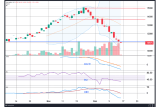
Japan’s shipbuilding industry is experiencing a revival, driven by the yen’s historic depreciation, now approaching 160 yen to the dollar. Major shipyards have reported significant financial gains in the past fiscal year, attributing a large part of this improvement to the weak yen, which has enabled much-needed wage hikes and capital investments into improving efficiency. However, not all shipyards are benefiting equally. Those engaged in vessel construction under yen-denominated contracts are facing higher procurement costs, leading to reduced profitability.
The long-term benefits of the weak yen for the shipbuilding industry are uncertain, as underlying issues are becoming apparent. A primary concern is the increasing cost of importing raw materials and energy, which drives up electricity and steel prices. This ongoing yen depreciation is widening the gap between shipyards with dollar-denominated ocean-going contracts and smaller yards with yen-based domestic contracts. Large Japanese heavy industry yards have mostly exited ship construction, with a few exceptions. Over the past decade, small and medium-sized standalone shipbuilders have begun capturing more market share, becoming more significant within the industry amid a wave of consolidation. In contrast, smaller domestic shipyards have remained small, continuing to serve niche markets.
In summary, while the weak yen has positively impacted ocean-going shipyards with dollar-denominated contracts, leading to record profits and significant wage increases, its overall effect on the industry is diminishing. Rising steel and energy prices, along with the growing interest in new-fuel ships, have mitigated some of the weak yen’s advantages. Moreover, while ship prices are currently rising due to supply and capacity constraints, these increases may not be sufficient to offset the escalating costs driven by the weak yen compared to foreign currencies. If the yen strengthens in the future, the costs of equipment, materials, and energy may not decrease proportionately, potentially eroding the profitability of shipyards.
Another challenge with USD-denominated contracts is the extended delivery timeline for new contracts, which now stretches to about four years (into 2028) for most major shipbuilders. This makes it extremely costly for shipyards to hedge against currency risk over such a prolonged period. Some shipyards choose to remain exposed to currency fluctuations in the interim period after contract signing, while others prefer to hedge a portion of the currency risks earlier. The decision largely depends on each shipyard’s perspective on future currency movements, which is a difficult prediction to make. More so than ever, choosing the right currency strategy is crucial, as the consequences of incorrect hedges can significantly impact the shipyard’s bottom line.
In addition, domestic shipowners are facing challenges due to the weak yen, which complicates vessel pricing. Traditional owners typically build vessels with the support of long-term charters denominated in USD. In the current weak yen environment, borrowing in yen to purchase vessels is risky, as a potential strengthening of the yen during long-term contracts could lead to significant financial losses. On the other hand, borrowing in USD to match income is also disadvantageous because of historically high interest rates, making loans much more expensive. This situation has made investing in newbuild vessels extremely difficult, with few projects being economically viable for traditional owners. In the medium term, domestic owners will likely continue ordering ships to replace their fleets due to emission and tax constraints. However, in the long run, this could turn into a significant challenge for shipyards, as domestic shipowners make up a substantial portion of their customer base.
Looking back at historical precedents, the late 1990s saw South Korea’s shipbuilding industry flourish during a currency crisis and subsequent IMF intervention, which devalued the Korean won. This devaluation propelled South Korea to the forefront of the shipbuilding industry, particularly facilitating their entry into the LNGC construction business. With the yen currently at historic lows, the key question is, “How much further can Japan’s shipbuilding industry ride these turbulent tides, and transform a fleeting opportunity into lasting prosperity?”
By Eugene Quek, Partner & Head of Projects in Japan.
Articles
You may also be
interested in
View allGet in touch
Contact us today to find out how our expert team can support your business















